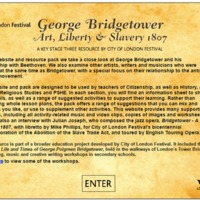
George Bridgetower: Art, Liberty and Slavery 1807
In this website and Key Stage 3 Resource Pack, the City of London Festival examined the work of the Afro-European violinist George Bridgetower (1778-1860) and, in particular, his relationship with the composer Ludwig van Beethoven. The resource also explored the role of other artists, writers and musicians who were active at the same time as Bridgetower, with a special focus on their relationships to the anti-slavery movement. The website provided music, video clips and worksheets, alongside an interview with Julian Joseph, composer of the jazz opera Bridgetower - A Fable of 1807, toured by English Touring Opera. The resource was part of a broader education project developed by City of London Festival, which included the exhibition, 1807: The Life and Times of George Polgreen Bridgetower, held in the walkways of London's Tower Bridge. The education project also included storytelling, music and creative writing workshops in secondary schools.
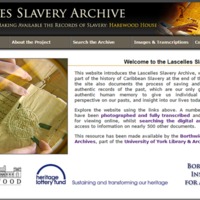
Lascelles Slavery Archive
The Lascelles Slavery Archive was a collaborative project between the Borthwick Institute for Archives and Harewood House Trust to conserve, preserve and make available records relating to slavery from the archives of the Lascelles family of Harewood House, Yorkshire. The project deals with a new discovery of papers relating to the family's fortune based on its estates in the West Indies. Key documents providing evidence for the acquisition of the family's wealth, once thought lost, were found in poor condition during an inventory of Harewood House. The Lascelles Slavery Archive is available through the Borthwick's searchrooms as an online resource, and represents an important section of the larger archive of the Lascelles family held by West Yorkshire Archive Service.
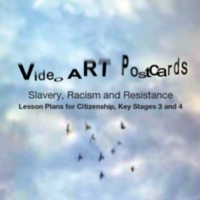
Video ART Postcards
To mark the bicentenary, Manifesta (a not for profit company delivering projects addressing cultural diversity) and the Runnymede Trust (an independent policy research organisation focusing on equality and justice) joined forces to launch a youth and digital media initiative, Video ART (Anti-Racist Trails) Postcards. The project explored connections between slavery, colonialism and contemporary issues of racism and related injustice. In the summer of 2007, two groups of teenagers aged 14-19 from the London Borough of Newham participated in workshops to uncover sites related to historical racism and anti-racism in the West India Docks area of London, assisted by video artists and historians. Using video for self-expression, each participant interpreted this history and heritage by producing a short personal video or 'postcard' - there were 33 videos in total. The videos were made available on an online resource, and a Teacher's Guide was created to be used alongside the website.
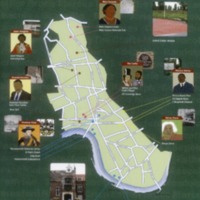
Remembering Slavery in Hammersmith and Fulham
Hammersmith and Fulham Urban Studies Centre is a voluntary educational organisation which offers opportunities to children and young people to learn about the local urban environment. The online curriculum resource 'Remembering Slavery' aimed to inform teaching and learning about the transatlantic slave trade by tracing the links of people and places in Hammersmith and Fulham to enslavement, the slave trade and its abolition. It explored the lives of enslaved Africans and their descendants, detailing their experiences and contributions in the local area. The resource aimed to encourage teachers to develop a locally-based Black history focus across curriculum programmes. It consisted of resource guides and animated films across four broad time frames: pre-Victorian, Victorians, Britain in the 1930s and 40s, and Britain since 1948.
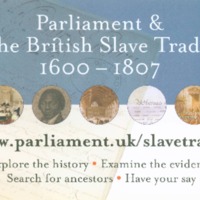
The British Slave Trade: Abolition, Parliament and People
This exhibition in Westminster Hall told the story of the pressures and events, at home and abroad, which influenced Parliament's abolition of the British slave trade in 1807. The Act itself was displayed alongside petitions sent to Parliament by the public. Also on display was Thomas Clarkson's African Box, used on his abolition tours.
As part of the wider project, the Parliamentary Education Service appointed poet and writer Rommi Smith as Parliamentary Writer in Residence to the exhibition. In a series of workshops, Rommi worked with secondary school pupils to explore the historical, social and emotional issues around the transatlantic slave trade in poetry and prose. This included letters and statements that they would have sent to the prime minister of the time, to Olaudah Equiano and other key figures. To mark the UNESCO International Day for the Remembrance of the Slave Trade and its Abolition on 23 August 2007, the Parliamentary Education Unit asked people to submit squares for a commemorative quilt. Some of these designs are available to view on the Parliamentary Archives website, which also uses original source material to tell the story of Parliament's complex relationship with the British slave trade.
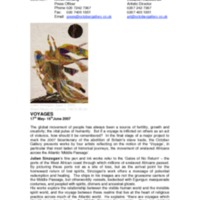
Bitter Aftertaste: Sugar, the Slave Trade and the Arts of the Atlantic World
The Bitter Aftertaste project included a range of schools’ workshops, an inter-generational outreach project, and a web-resource exploring the material culture and legacies of the transatlantic slave trade in art and society today. There were also two related exhibitions. For 'From Courage to Freedom', the gallery commissioned three leading visual artists from West Africa - El Anatsui, Romuald Hazoumè and Owusu-Ankomah - to create works to mark the bicentenary. 'Voyages' saw works by four artists - Julien Sinzogan, Tapfuma Gutsa, Pierrot Barra and Gérard Quenum - reflecting on the notion of voyages, in particular the movement of enslaved Africans across the Atlantic Middle Passage.
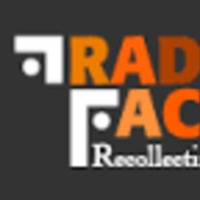
Trading Faces: Recollecting Slavery
Trading Faces: Recollecting Slavery was a consortium project developed by Future Histories (a non-profit organisation set up to maintain archives of African, Caribbean and Asian performing arts in the UK), Talawa Theatre Company (a leading Black-led touring theatre company) and V&A Theatre Collections. Trading Faces made use of archive documents, video and audio material to explore the legacy of the transatlantic slave trade in British performing arts and society. By promoting the use of primary resources, the online exhibition aimed to stimulate creativity, critical thinking, individual responsibility and participation. Highlights of the exhibition included a performance timeline featuring recently archived material from the past 200 years, narratives of slavery from both the past and present and a series of virtual rooms, which explored ritual, religion, carnival and masquerade amongst other aesthetic themes. On the Open Doors section of the site, users contributed material and ideas to promote a critical debate on the subject. As part of the project, the 'Retrace: Identity and Heritage' educational resource pack from Talawa Theatre Company is about the exchange of culture between the UK and other countries linked by the transatlantic slave trade and colonialism, and the impact of these relationships on the performing arts.
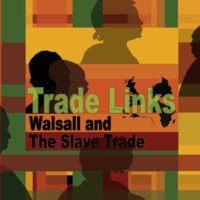
Trade Links: Walsall and the Slave Trade
An exhibition at Walsall Museum looked at Walsall's links with the slave trade, the background to the Abolition Act of 1807, and the legacies of slavery. Walsall's metal industry included chain making by local women of Cradley Heath, and the manufacture of guns used to trade for captive Africans. The exhibition was accompanied by a programme of presentations, lectures and workshops, including art sessions with local residents and the artist Pauline Bailey. Part of the wider project featured an online resource 'Abolition WYA' by Walsall Youth Arts, which encouraged young people to explore the topic of slavery and contribute poems, visual arts and music to express their views. Some of the images featured on the site are pictured here.
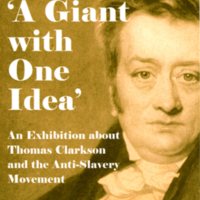
'A Giant with One Idea': An Exhibition about Thomas Clarkson and the Anti-Slavery Movement
A Giant with One Idea told the story of the anti-slavery campaign through the personal narrative of the abolitionist Thomas Clarkson, who was born and raised in Wisbech. The exhibition included an overview of the transatlantic slave trade, major campaigners in the abolition movement, the antislavery campaign after 1807, and details of Clarkson’s travelling chest, which he used to help illustrate the cruelty of the slave trade. The exhibition later travelled to other venues in the area. Accompanying the exhibition was a handling box based on Clarkson’s chest available for schools and community groups, as well as a children’s activity booklet led by the character of Clarkson himself. The museum also supported the publication of a number of books telling the life stories of Thomas Clarkson, and his less well known brother, the naval officer John Clarkson.
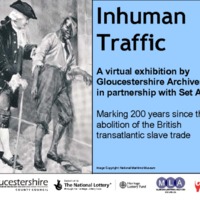
Inhuman Traffic
The Inhuman Traffic project was led by Gloucestershire Archives, in partnership with the Set All Free initiative. The virtual exhibition and accompanying web resource were based on documents held at Gloucestershire Archives and, in particular, the papers of the anti-slavery campaigner Granville Sharp (1735-1813). The exhibition explored topics such as the contribution of black people to the abolition movement, aspects of the legacies of slavery, including racism and domestic violence. Over 400 copies of the exhibition DVD were sent to schools, churches, tourist information venues and individuals across Gloucestershire. The associated programme of events included performances of the play 'Inhuman Traffic', developed in collaboration with a local theatre company, Spaniel in the Works. The play features four interacting characters with different perspectives on slavery. A cross-curricular teaching resource was later developed, which included a second performance, 'Master and Slave', in partnership with Stroud District Museums Service, Spaniel in the Works, and Parliament Primary School, Stroud.
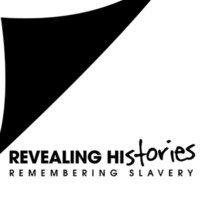
Revealing Histories: Remembering Slavery
The Revealing Histories: Remembering Slavery project sought to uncover the North West's involvement in the slave trade (and the consequent social and economic effects of this involvement) and the region's contribution to the abolition of the transatlantic slave trade and colonial slavery. Eight museums and galleries across Greater Manchester collaborated to commemorate the lasting legacies of the transatlantic slave trade. The participating venues were: Bolton Museum and Archive Service; Gallery Oldham; Manchester Art Gallery; The Manchester Museum; Museum of Science and Industry; People's History Museum; Touchstones Rochdale; and Whitworth Art Gallery. A collaborative website and a programme of exhibitions, trails, performances, films and events took a new look at the collections of these museums and galleries and the buildings in which they are housed, revealing hidden histories of the region's involvement in the slave trade. The project also examined slavery's contemporary legacy and relevance.
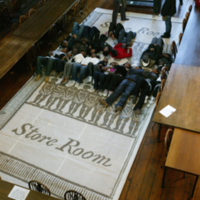
Changing Perspectives
Changing Perspectives was a community-based initiative based around the experiences of twenty-five African and Caribbean families from the North-East, to explore how their life in the UK contrasts with the lives of their ancestors. The project created a multimedia archive of cultural responses to celebrate the heritage of these families. This included oral testimonies, creative writing, photography, digital storytelling and art, emerging from a variety of community-led workshops. A series of workshops were held at Durham University Library, Archives and Special Collections (pictured), including a session aimed at children and young people, which focused on the experiences of children in the slave trade via extracts from the autobiography of Olaudah Equiano. Project outputs included a book, an interactive website, an exhibition of words and pictures of the community, an oral testimony collection, and series of documentary films. A key aim of the project was to promote community cohesion and develop cross cultural awareness and understanding.
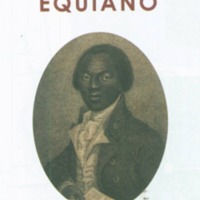
The Equiano Project
The Gas Hall at Birmingham Museum and Art Gallery was host to a biographical exhibition of the life and adventures of Olaudah Equiano, a leading African figure in the British abolition movement in the 18th century. The project was led by Birmingham Museum and Art Gallery and the Equiano Society. The national exhibition was inspired by Equiano's autobiography 'The Interesting Narrative' (1789), by international and national artworks, and objects from Birmingham museums’ collections. It provided a narrative of Equiano’s life, and also explored wider local links between the West Midlands and the transatlantic slave trade. The Equiano Project also created a website, educational packages (available to buy via the project website), and a series of events and outreach activities. The exhibition publication 'Equiano - Enslavement, Resistance and Abolition' was edited by Arthur Torrington, Rita McLean, Victoria Osborne and Ian Grosvenor, and provided new insights into enslavement, resistance, abolition, and the African presence in Britain in the 18th century. Two touring exhibitions were loaned to community centres, libraries and other venues, including Walsall Museum, Sheffield and District African Caribbean Community Association and the Hudawi Cultural Centre in Huddersfield.
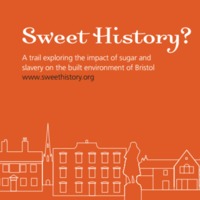
Sweet History?
The Sweet History? project saw the Bristol Architecture Centre work with young people from the Knowle West Media Centre to explore the social and economic impacts of the sugar and slave trades on the built environment heritage of Bristol. Working with local artists and historians, the young people put together the Sweet History? Trail, containing photographs and information about 23 sites in and around Bristol that have links to the sugar and slave trades. The project had a particular focus on using digital technology to develop an interactive website (which included an audio podcast of the trail) to engage youth audiences with the study of heritage buildings.